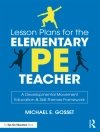Includes CD-Rom
For many teachers, gender issues related to role models, image and expectations have an effect upon the behaviour and achievement of both boys and girls, often to their disadvantage.
This innovative and practical resource, for teachers of students aged 5-13 provides:
o a programme to promote gender equality and inclusivity in schools and colleges
o a rationale for the programme based on social justice
o a practical set of classroom activities to implement the programme
The book combines the talents and commitment of two leading authors to provide an ′action inquiry′ methodology – engaging students and staff in the processes of investigating what is currently happening, and planning, implementing and reviewing improvements. This contributes to the development of the school as a self-evaluating organisation, which listens to the voice of the child.
The programme supports teachers and other school staff in developing as reflective practitioners, and children and young people in developing as reflective learners. It can also be used to engage schools and colleges in joining the UNICEF ′Rights Respecting′ programme which is demonstrating positive results.
′A real strength of the resource is the inclusion of practical activities that have been carefully designed for pupils. These are excellent and lend themselves for use in a variety of ways. This is a thoroughly recommended resource.′ – SENCO Update
สารบัญ
1. Relationship to ‘Self’: identify issues
Introduction
How issues of gender are presented today
What such perspectives conceal
Making sense of the issues
Gender and social justice: an inclusive approach
How to use this book
Chapter 1: Relationship to ′Self′: Indentity Issues
Introduction
How to use the activities
Practical strategies (9-13 and 5-8)
Further references and resources
Reflection and next steps
Chapter 2: Relationships with Others: Social Interactions
Introduction
How to use the activities
Practical strategies (9-13 and 5-8)
Further references and resources
Reflection and next steps
Chapter 3: Learning and Teaching
Introduction
How to use the activities
Practical strategies (9-13 and 5-8)
Further references and resources
Reflection and next steps
Chapter 4: Communication, Language and Literacies
Introduction
How to use the activities
Practical strategies (9-13 and 5-8)
Further references and resources
Reflection and next steps
Chapter 5: Families, Communities and the Wider World
Introduction
How to use the activities
Practical strategies (9-13 and 5-8)
Further references and resources
Reflection and next steps
เกี่ยวกับผู้แต่ง
Tina Rae specializes in social, emotional and behavioral disorders and difficulties. She has undertaken research in the areas of engagement and disaffection with learning in young people, debriefing following critical incidents, attachment disorders, emotional well being and the psychological assessment of young offenders. Rae is experienced in assessing children and young people with respect to learning difficulties, emotional well being and relationships with carers. She is a registered member of the Health Professions Council and a full member of the British Psychological Society. She is currently a Professional and Academic tutor on the Doctorate in Child and Educational Psychology at UEL. Tina is a member of the SEBDA executive and council and a member of ENSEC. With 68 publications to date, she has written extensively on topics such as well-being, attachment, resilience, emotional literacy, behavioural problems, anger and stress management, critical incidents, cognitive behavioural therapy, motivational interviewing, solution focused brief therapy, loss and bereavement in young people, youth offending and social skills development.












